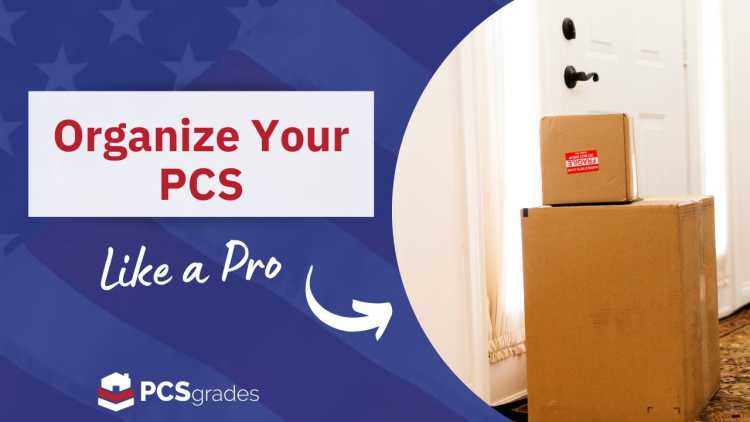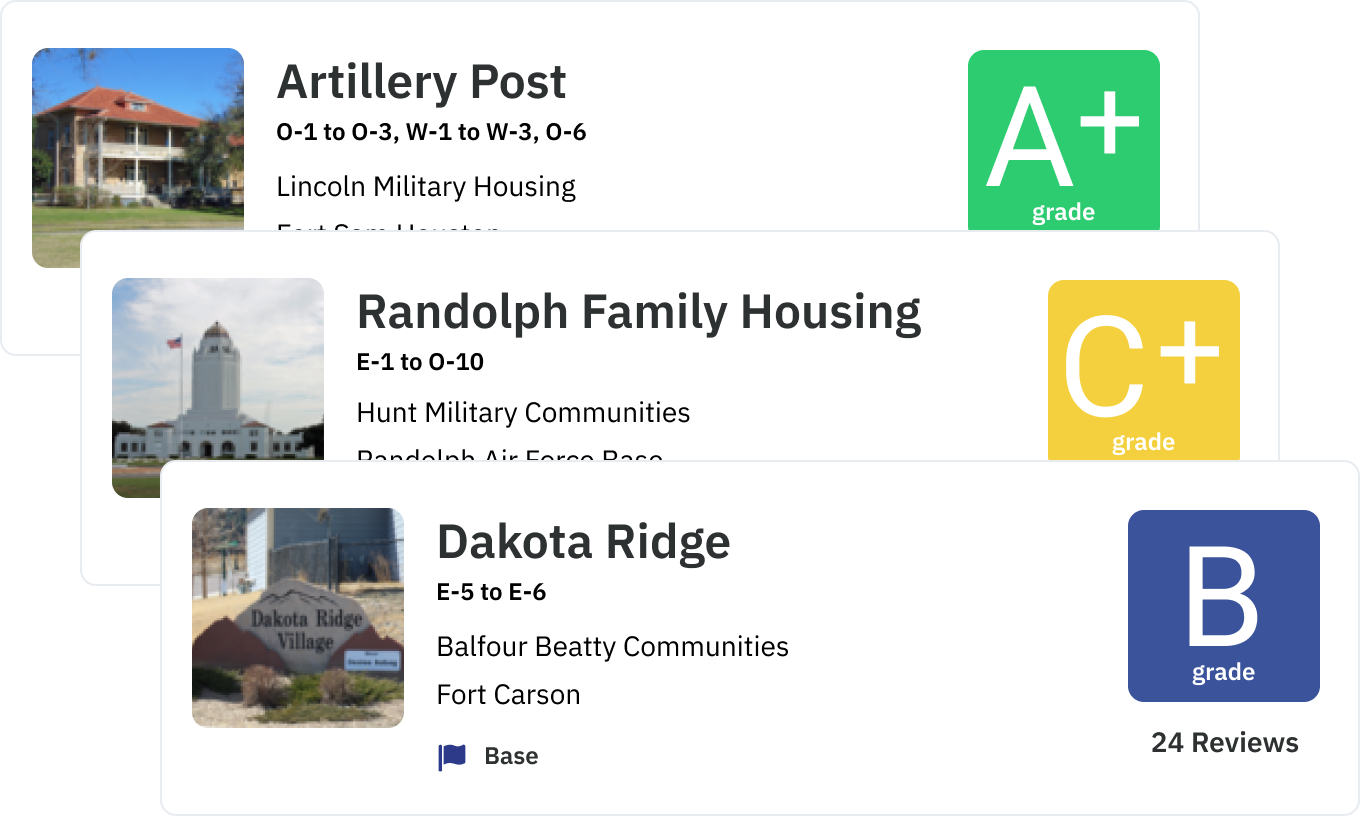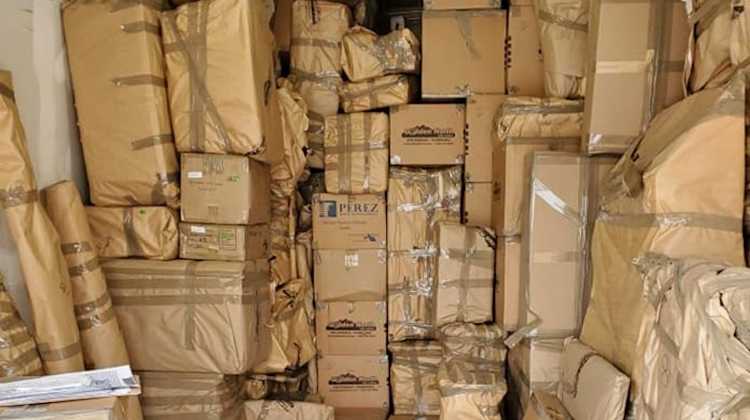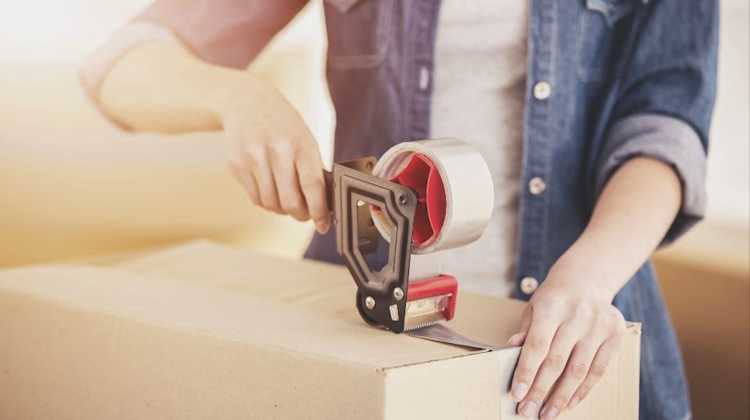PCS Moving Tips
by Lizann Lightfoot - July 17th, 2021

Today’s guest is Megan Harless, our resident PCS moving expert!
When you have hard orders to set up your move, what happens next?
The first step is to go to Move.mil, access DPS, and set up your move. You can choose a PPM (Personally Procured Move) or a TSP (Transportation Service Provider) move. You can choose your different shipments and entitlements, but then you are in a holding pattern for a little while. The TSP will contact you a few months before your move to do a pre-move survey. Many companies are doing this as a virtual tour with an app. They want to see how much stuff you have, anything over-sized that may require special packing material, how many crew members to send, what type of truck you need, etc.
Either before or after your pre-move survey you’ll get an email through the DPS system that assigns you a local agent where you are and at your gaining installation. Sometimes the TSP is your local agent at origin or destination. You should see in your DPS email exactly who is doing your move. You will get a designated move coordinator who is your single point of contact to communicate directly with them. Your move coordinator stays the same person from start to finish: before, during packing, at delivery, etc. You shouldn’t be interacting much with local agents or calling their offices. You should be contacting the move coordinator from the TSP to handle any problems or issues. This can be confusing for a new family, just know that there will be multiple hands involved in your move, but the move coordinator is your go-to person.
What are basic things to do to prep your home before the movers come?
We hosted a previous webinar on just this topic. You can read or watch it here.
Pool noodles can be used in boots to help them keep their shape so they won’t get crushed during the move. Get them on clearance and cut them to size to protect your boots. When packing clothes, use trash bags as garment bags: pull them up from the bottom, then tie a group of hangers together. This keeps things clean, and if anything falls off it stays in the bag rather than getting lost in a large wardrobe box. You can use colored zip ties at the top to organize by person, by season, or whatever makes sense to you.
Ziploc flex totes work well to hold soft/bulky things together. It will keep it clean and organized through your move. They are almost the same size as the boxes the movers use, so two of them stack neatly in a medium sized box. So you can unpack quickly and get the cardboard box quickly out of your house. Using the vacuum-seal bags is ok, but they sometimes take on a strange shape and don’t fit well into the boxes. Use Gallon-size Ziploc for drawers of office items, craft supplies, kids toys, junk drawer, etc. Jumbo Ziploc bags are also useful for keeping things together and organized. They cost a bit, but save some for future PCS moves!
Use room labels as color-coded labels on boxes. You can walk through at the end of a packing day, before loading day, to check your family name spelling and place a family contact stamp on each box, in case it ends up in someone else’s shipment. On the delivery day, use the same colored room labels to make a list of the major furniture pieces in each room. This keeps you organized and lets you spend less time directing traffic on moving day.
Special note: if your name, phone number, or email address is on the box, then use a Confidential stamp to cover up all your personal information before you toss it or recycle it. You don’t want that box floating around or having someone contact you later because you gave the box to someone else.
What do you do during move day?
I do a lot of walking around, talking to people, and checking on things. I check how they are packing things, how they spell our name on the boxes, and whether they are making enough detailed notations on the side of each box. I stay an active participant and tidy up around them while they are packing. It’s important to catch things before they become an issue. You can’t just sit back and let bad things happen to you. Talk to them to build that rapport, so they will be willing to ask you questions. They will feel more comfortable asking you to move things around or pack certain items together. They are working on such a short time-frame, so you need to be actively involved and available. When they are in the kids rooms, make sure there isn’t a bunch of trash or old toys/clothes shoved into corners or behind the furniture.
There are several types of inventories: high-value, boxes, furniture. Who does what and what do we need to know?
There are several forms that get filled out during the moving process. Your Household Goods (HHG) inventory has an inventory of furniture and loose-packed items. It uses descriptive symbols and codes. Pay attention to those letters and symbols! They are marking things as damaged, soiled, chipped, scratched, etc. At the end of the day, take your time reviewing the inventory sheet. If there are incorrect labels or codes, ask questions. You are allowed to write that you do not agree with an assessment.
There is another section for your box inventory. They are writing the cubic size of a box, so they know what size box goes missing. The general description will list the type of item, and the condition of items will be described in the middle column. On packing day they do an inventory of the boxed items, and on loading day they do the inventory of the furniture items. Be aware that you have two separate inventories and that you need to review and sign each one. Box inventory is at the end of pack-out with the packers. On load day, the driver will do the furniture inventory with you.
The high-value form is for items that are hard to replace, irreplaceable (signed sports memorabilia), collectibles, china, valuables, anything worth $100 per pound. When your HHG is delivered, you need to open and check every high-value item box. Once you sign the bottom of the high-inventory form, you cannot claim anything to be lost or damaged later. Your claim will be denied if you have already signed the form.
Statement of Accessoral Services verifies what services a company provided for you. It includes packing, unpacking, disassembling furniture, etc. This is used for the company to get reimbursed from the government for their moving services.
How should I do a visual inventory?
Take pictures of everything before you move to show that everything was working. If you don’t have space on your phone, create a private album or FB or a private group for just you and your spouse so you can show the date the photos were uploaded and prove that things were working, not damaged, etc. Stand in the center of each room and take a few pictures while turning around slowly. This will show you everything that is on the walls, on shelves, etc to help jog your memory if things get lost.
Before move-in day, what do you do?
Walk through the house and plan where you want to set up furniture, what each room is going to look like. Walk the movers through the layout so they know where the beds will go and don’t stack all the boxes up on that wall.
Fill the fridge with bottled water and Gatorade, especially if moving on a hot day!
When they arrive, greet them and walk them through, show where major furniture pieces go. Take the inventory forms and either write down each number as it is called out, or check off each item box on the inventory sheet. Check the condition of each item as it comes off the truck. Snap a quick picture if you notice any damage. A scratch is not a big deal, but any major damage should be noted or discussed. Depending on the extent, the piece may not need to go into the home. Remember that the driver may not be responsible for the damage, because it could have happened in the warehouse or anywhere along the journey. Note the item number and the damage and make a list of all the details so you will be ready to make your claim.
On move-in day, what paperwork is there?
You will sign again on move-in day for everything you signed on loading day. You will sign again for the inventory. Then there is the form for Notification of Loss or Damage at Delivery. You will need the inventory number, the item, and the description. After May 15 2020, you do now have 180 days after delivery to declare something is lost or broken. But if you notice any of this is missing or damaged on delivery, then you need to declare it right away. It can be difficult to get every inventory number checked off while things are coming off the truck. It can be tedious and difficult to get every box called off when they are coming off the truck so quickly.
No company wants to pay out a claim for missing or damaged stuff, so if you don’t have a number checked off from the sheet at the end of the day, then the whole crew needs to go through the house and search for those missing box numbers. Be aware that sometimes your boxes and furniture may have two different color tags. You may have a tag from an older move on your furniture, but you need to peel them off because they can get confused with other shipments!
What if your movers label everything as scratched or damaged while they are loading?
You need to know what those damage assessment codes are. Pay attention to what they are writing about your furniture. It is your right to notate on the form that you don’t agree with an assessment. You can circle, write an arrow, draw a line, etc and then write that you do not agree.
You can call your move coordinator to ask for a quality control person to come out from the moving company to adjust the damage claims. It’s also helpful to take photos or videos of the movers packing your things so you can prove that it was not damaged on moving day, but must have happened later.
When the driver shows up to do your inventory, ask the driver to have them show you any damage they notice first and discuss it before they mark it on the inventory sheet. It is their right to be nit-picky and notate every nick and scratch, but they don’t want to be held accountable for some damage they didn’t cause. They should be notating where a scratch is located. You can notate details, take a picture before something is wrapped, etc.
But you can also contest afterwards that a scratch is not a gouge, and something more significant has occurred. The codes and symbols should indicate the size and location of damage. Try to take photos within the week of the move, unless it is holiday items that have been packed up since December. Always pack them up as if you are moving, and take a picture, because you never know when you will get surprise orders! But everything else should be photographed 1-2 weeks before the move.
During this process, how do you keep everything organized?
I am a big fan of a PCS binder. It’s a 3-ring binder or accordion style file with tabs for multiple copies of orders, medical records, school documents, birth certificates, lease agreements, and all the paperwork we receive from the movers. This allows you to keep everything together, and then you won’t be held up registering for school, getting set up, establishing utilities, etc. You can bring it in the car and carry it into the hotel with you each night. There are apps you can use to put it all in your phone, but then if your phone or computer breaks, you still have physical copies to use. Your cell service may not always work while you are moving, so it’s frustrating to wait to get a signal just to send an email or do any important paperwork.








